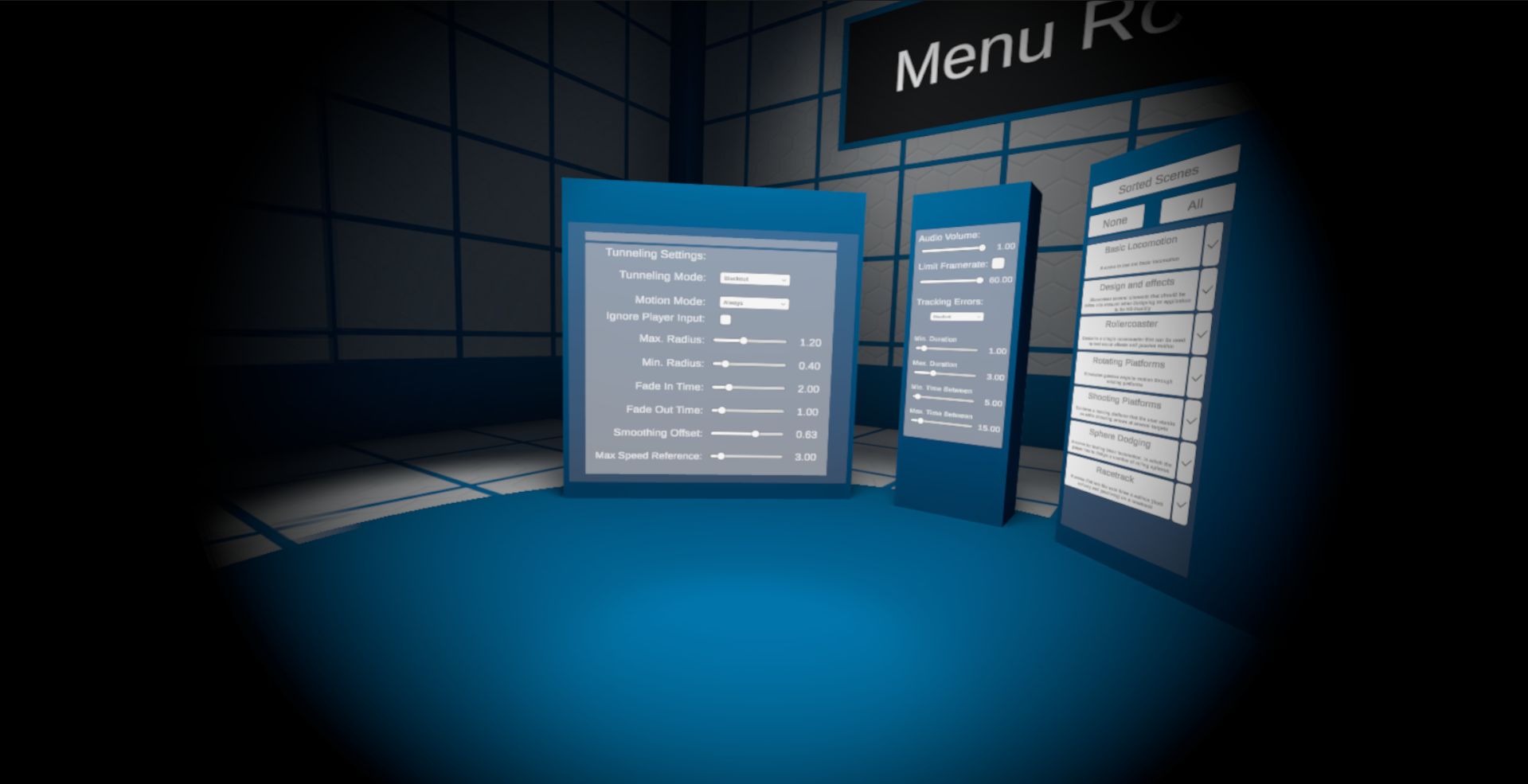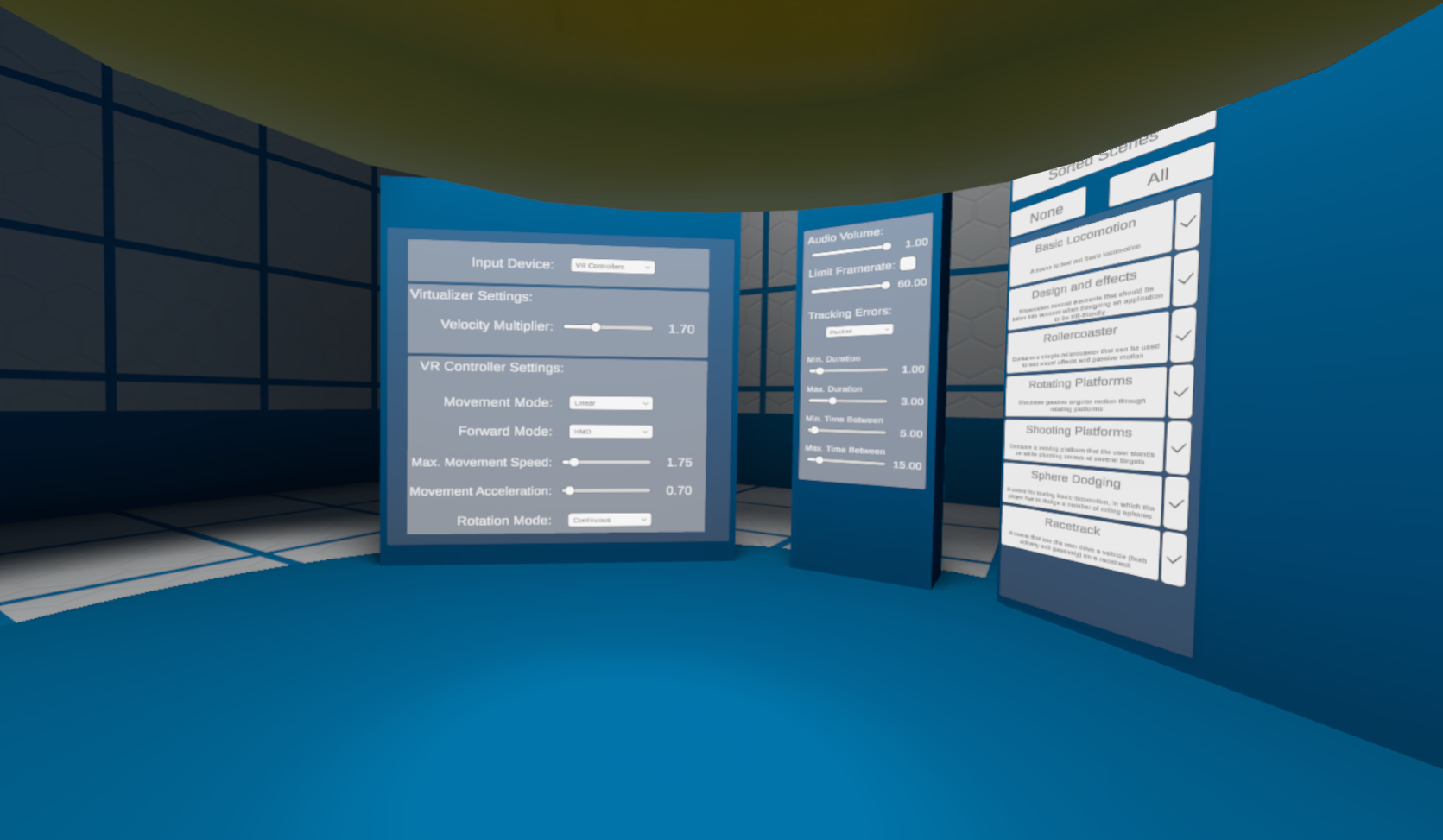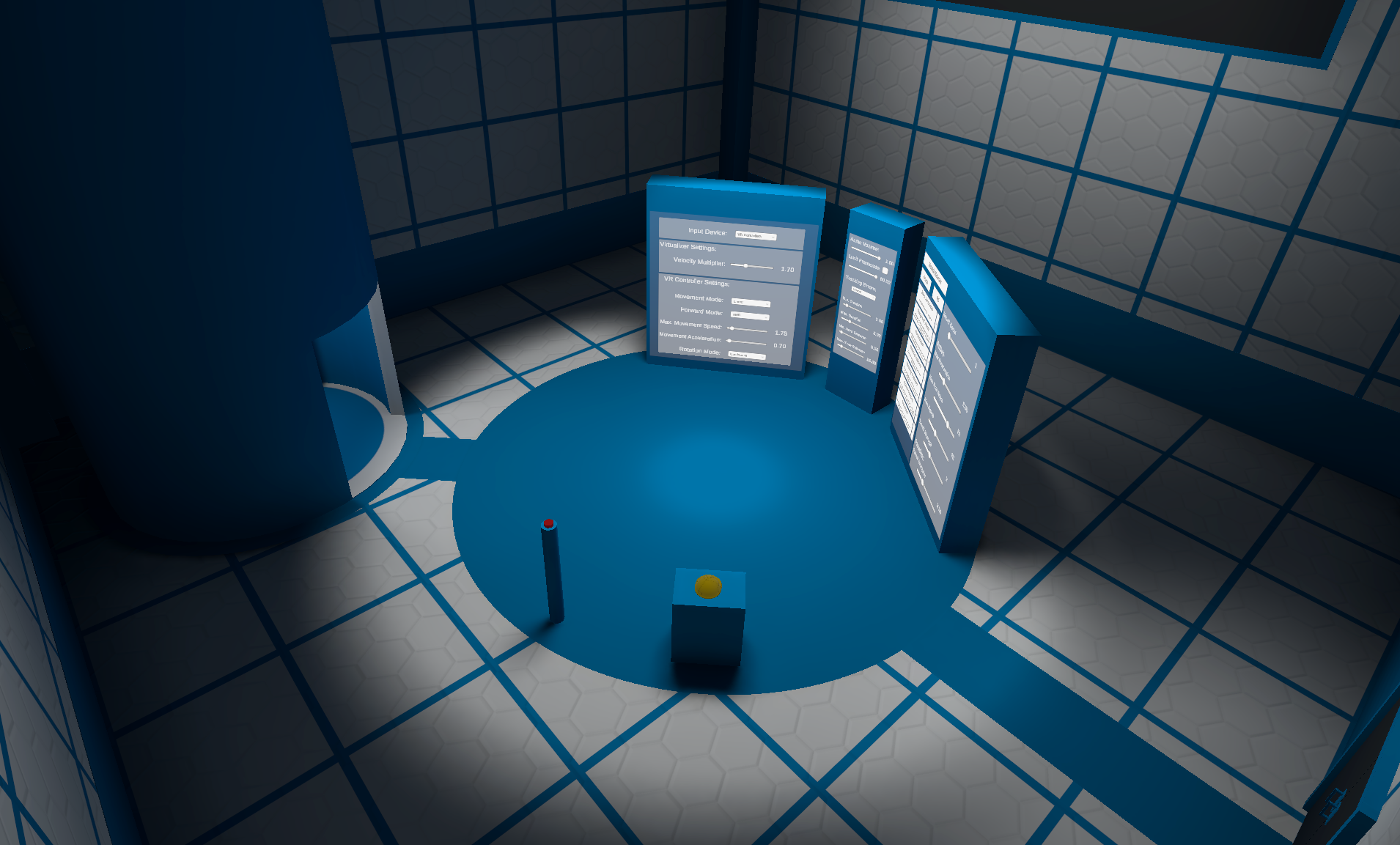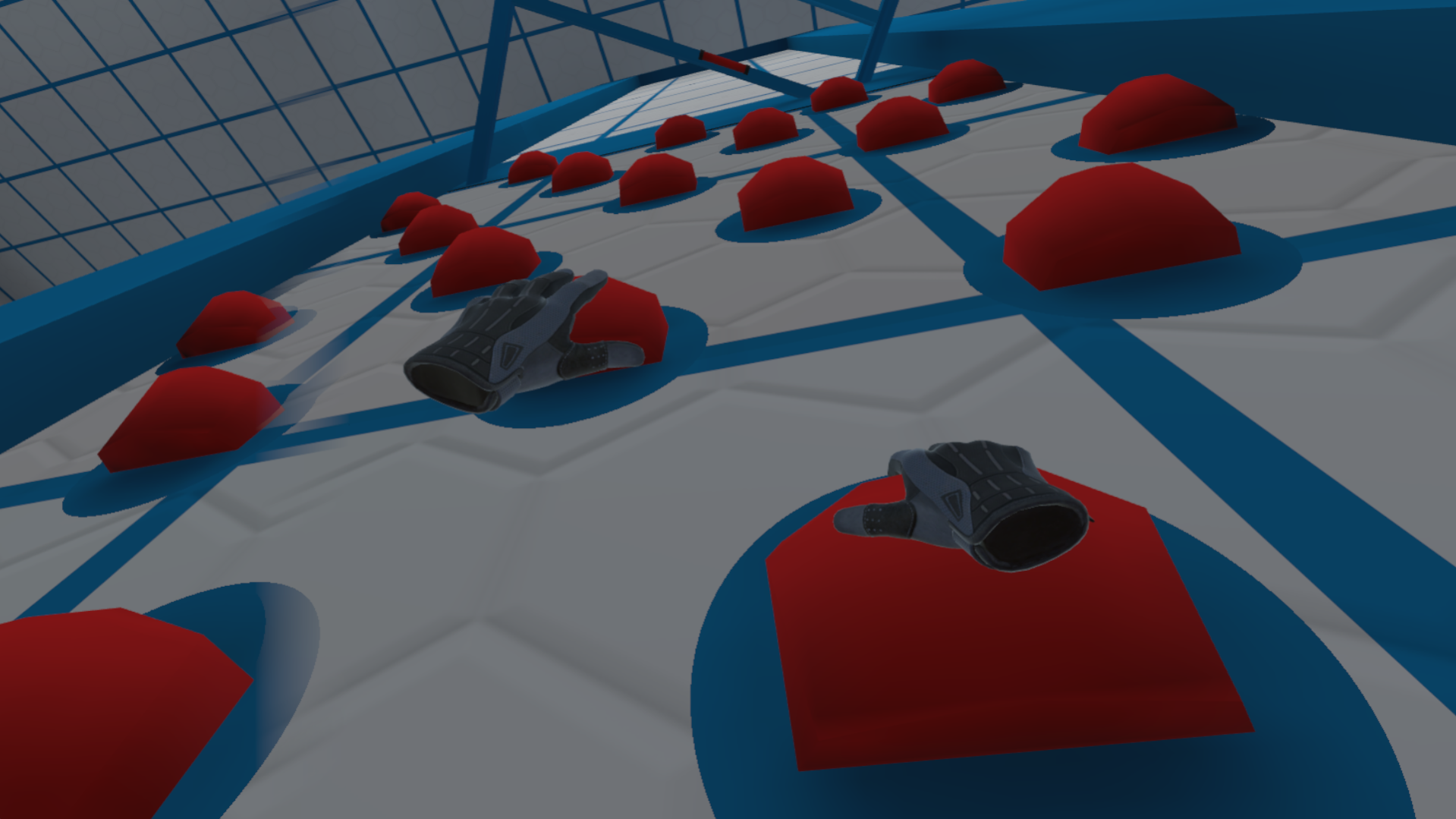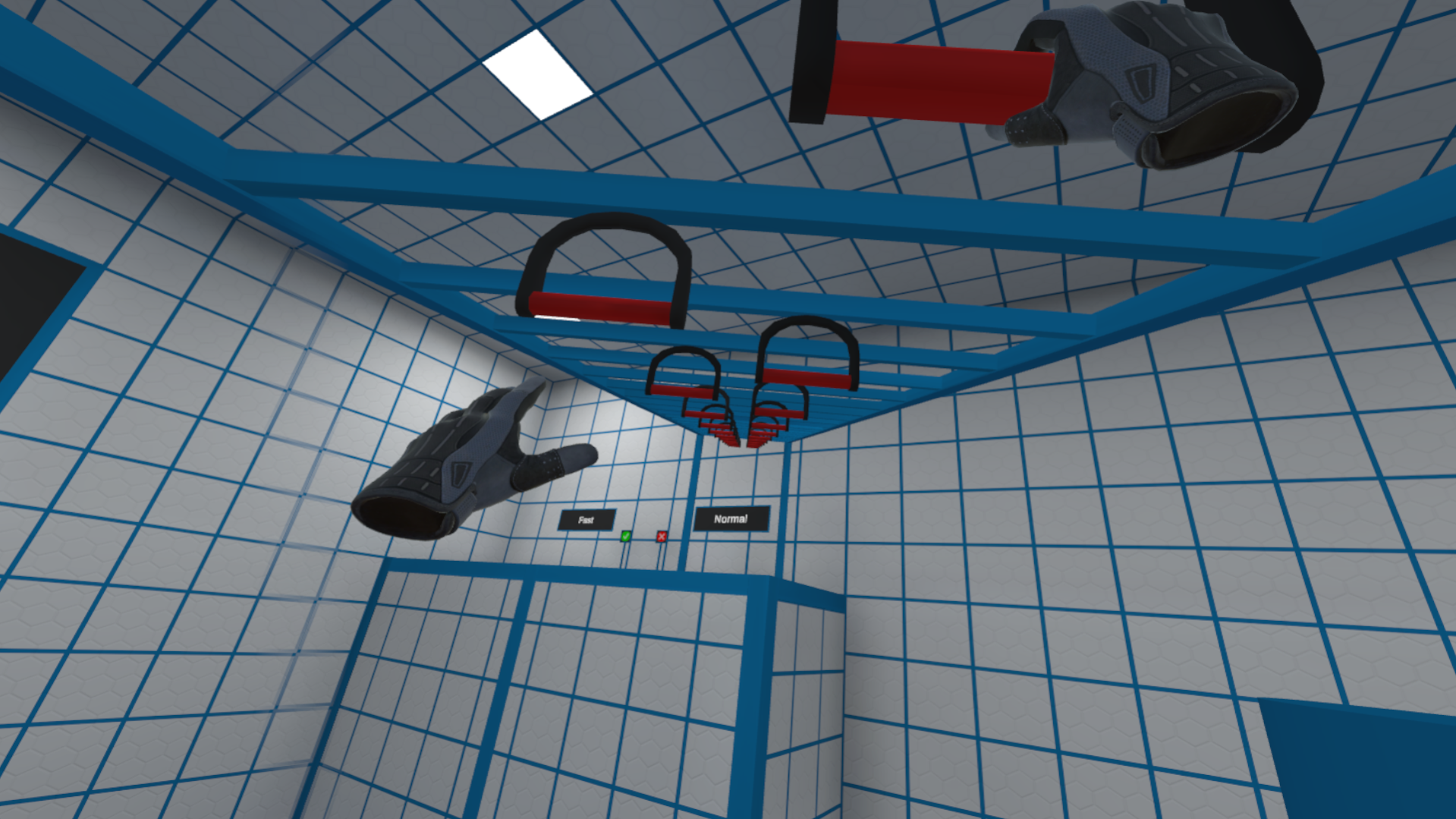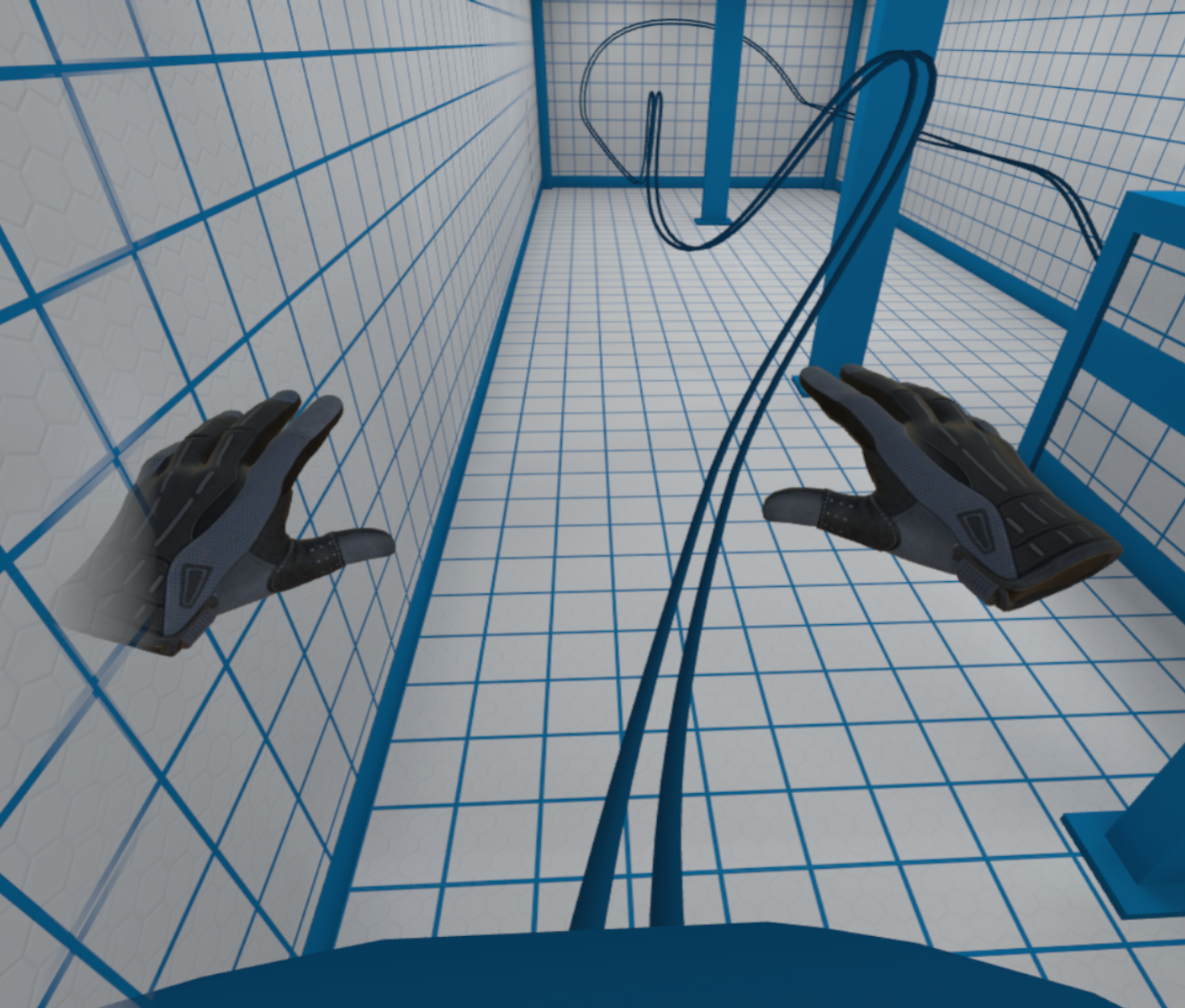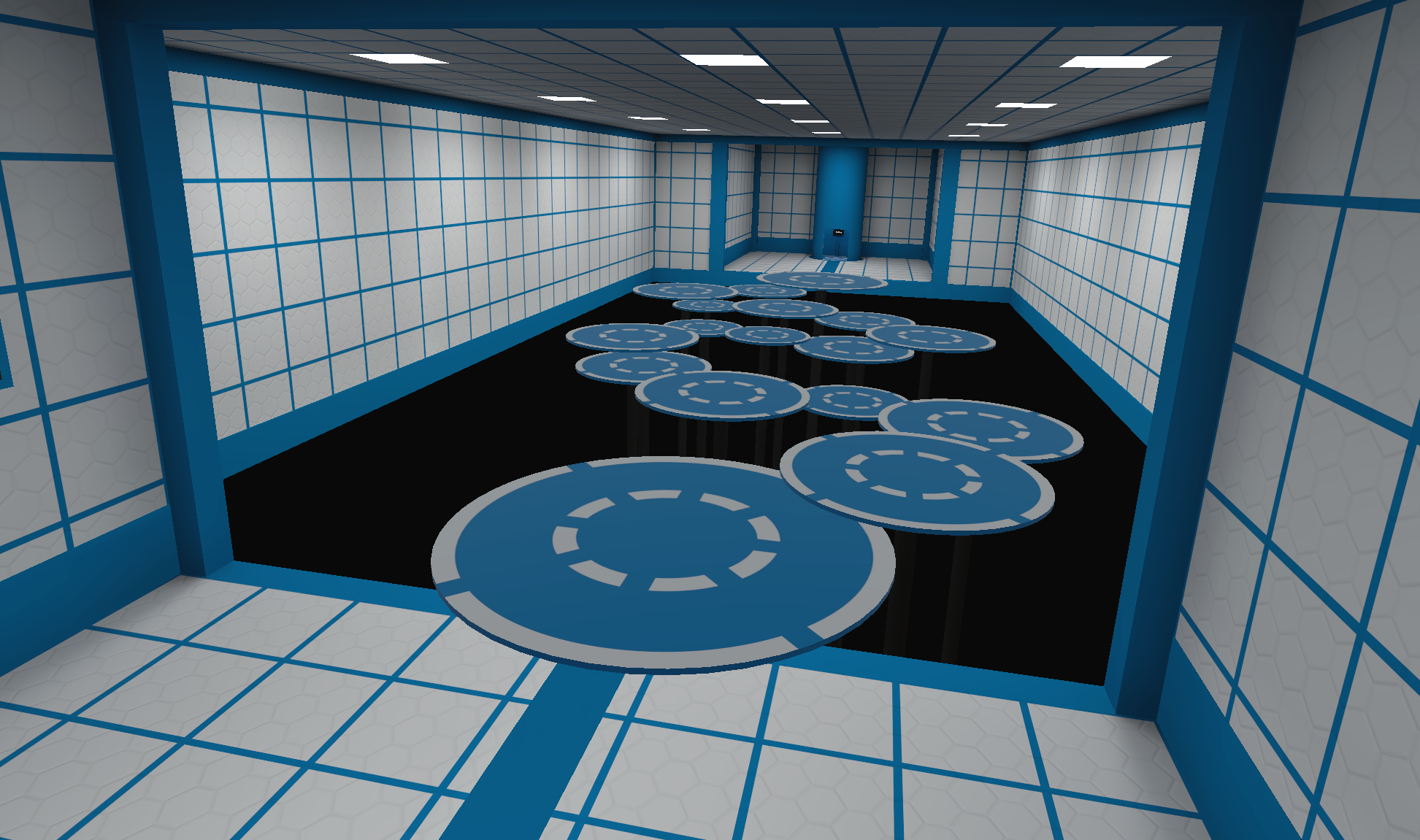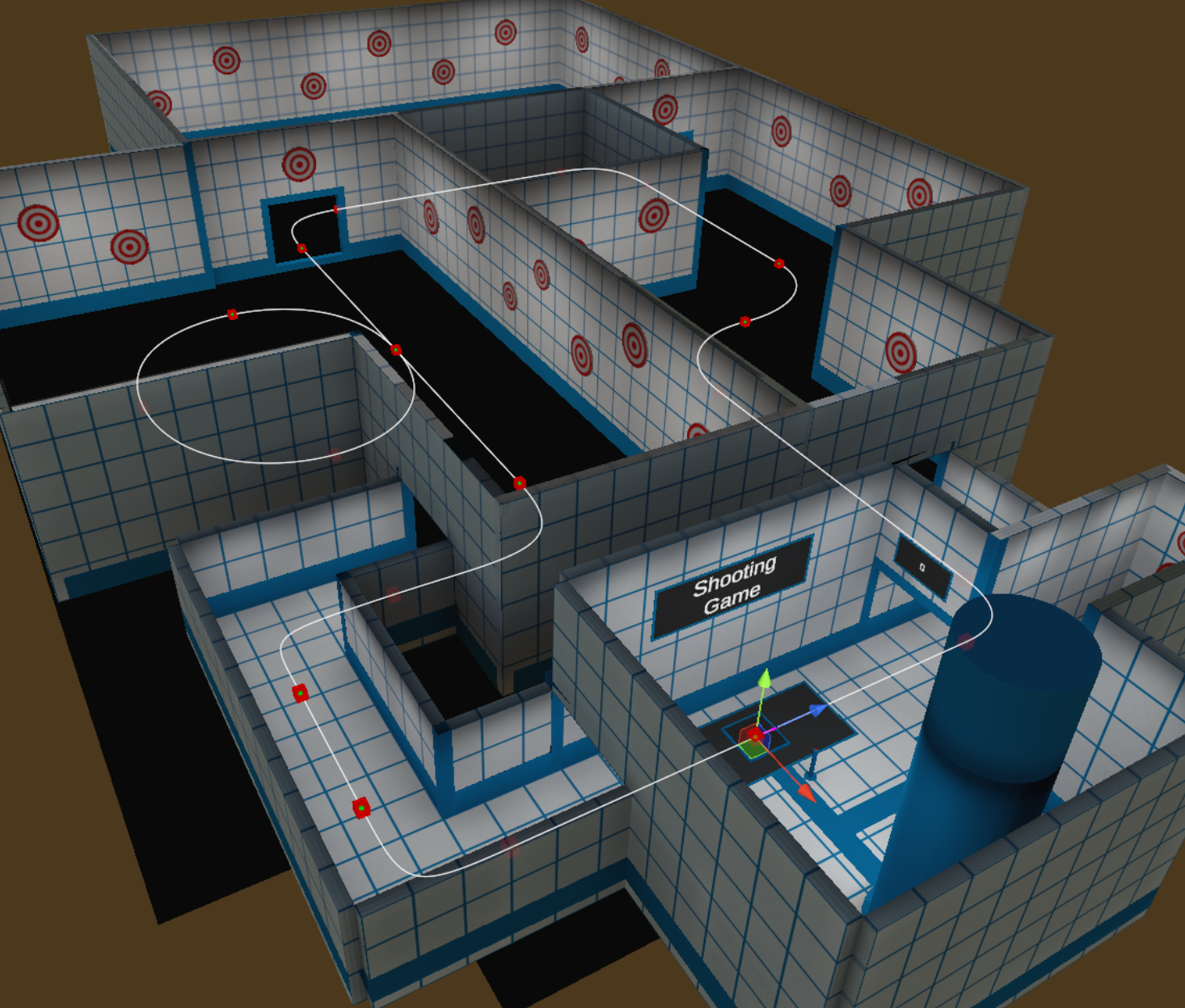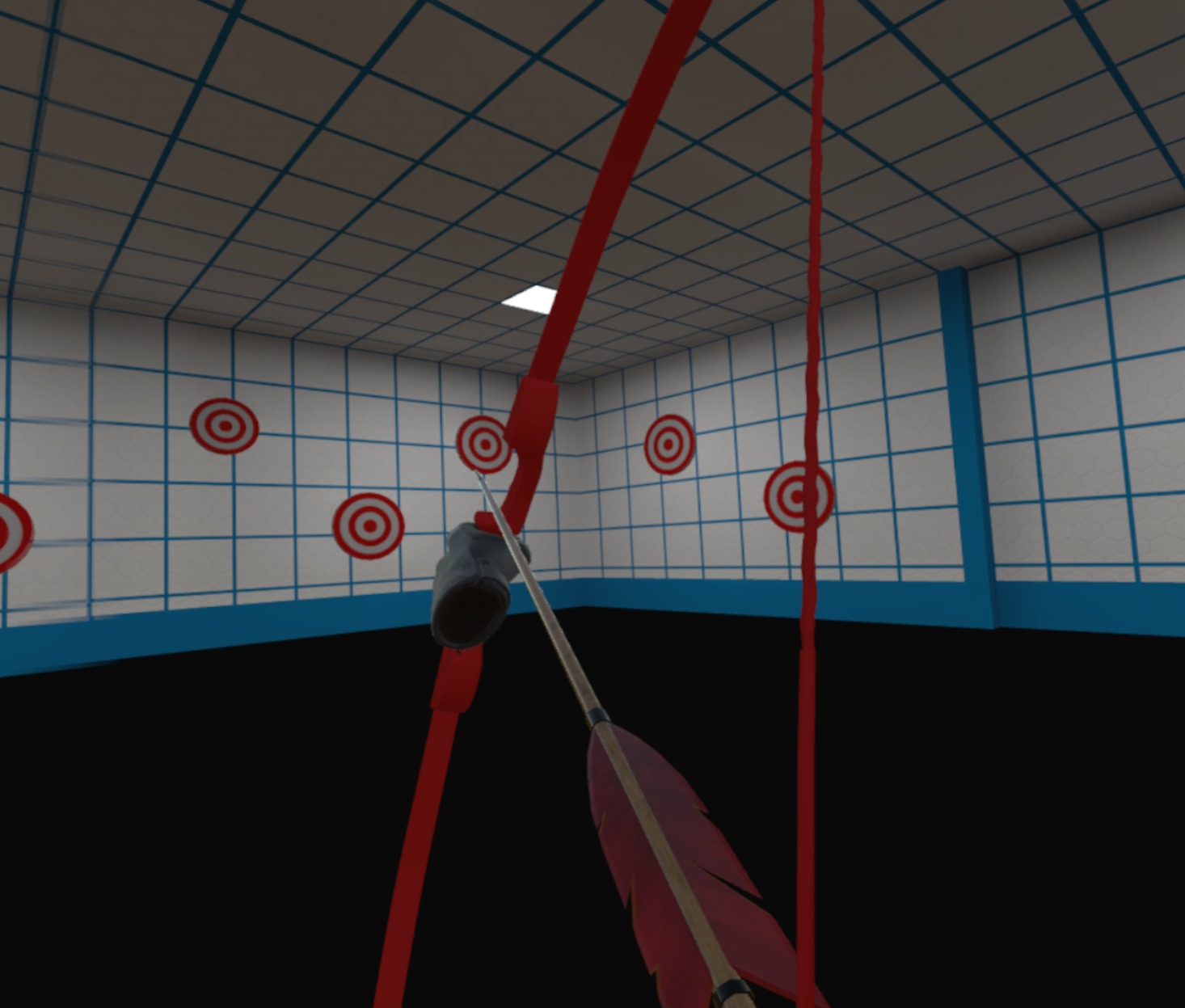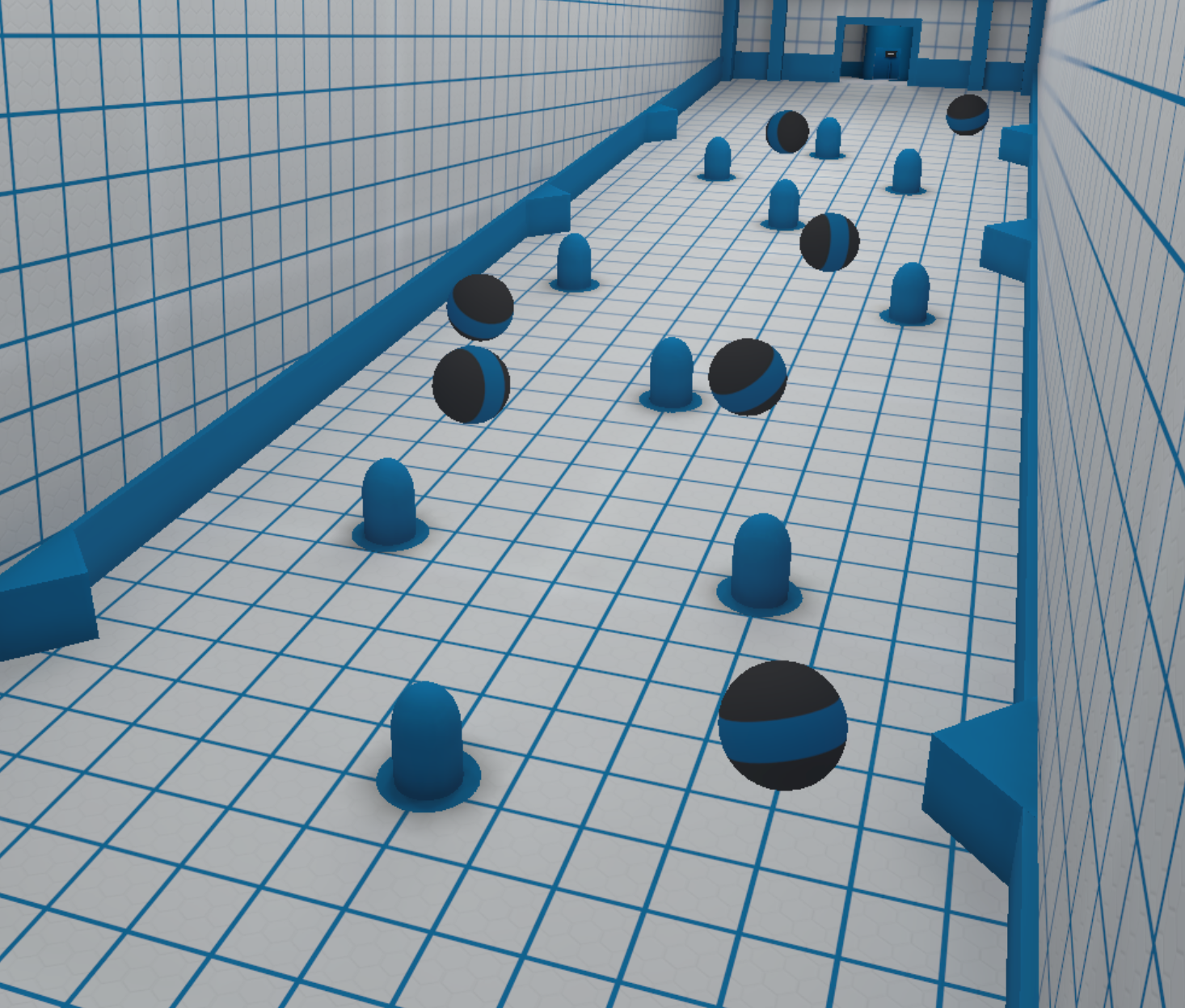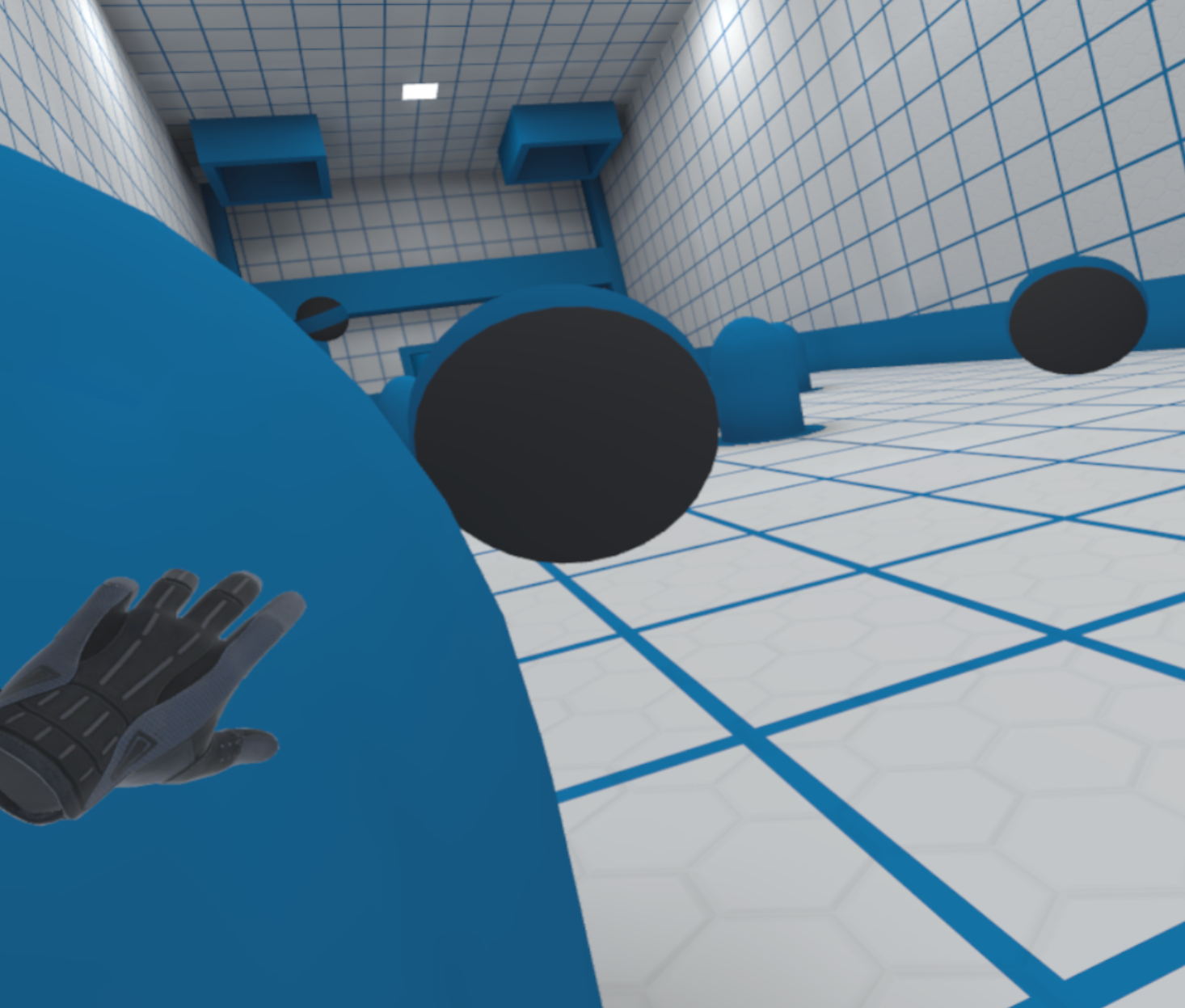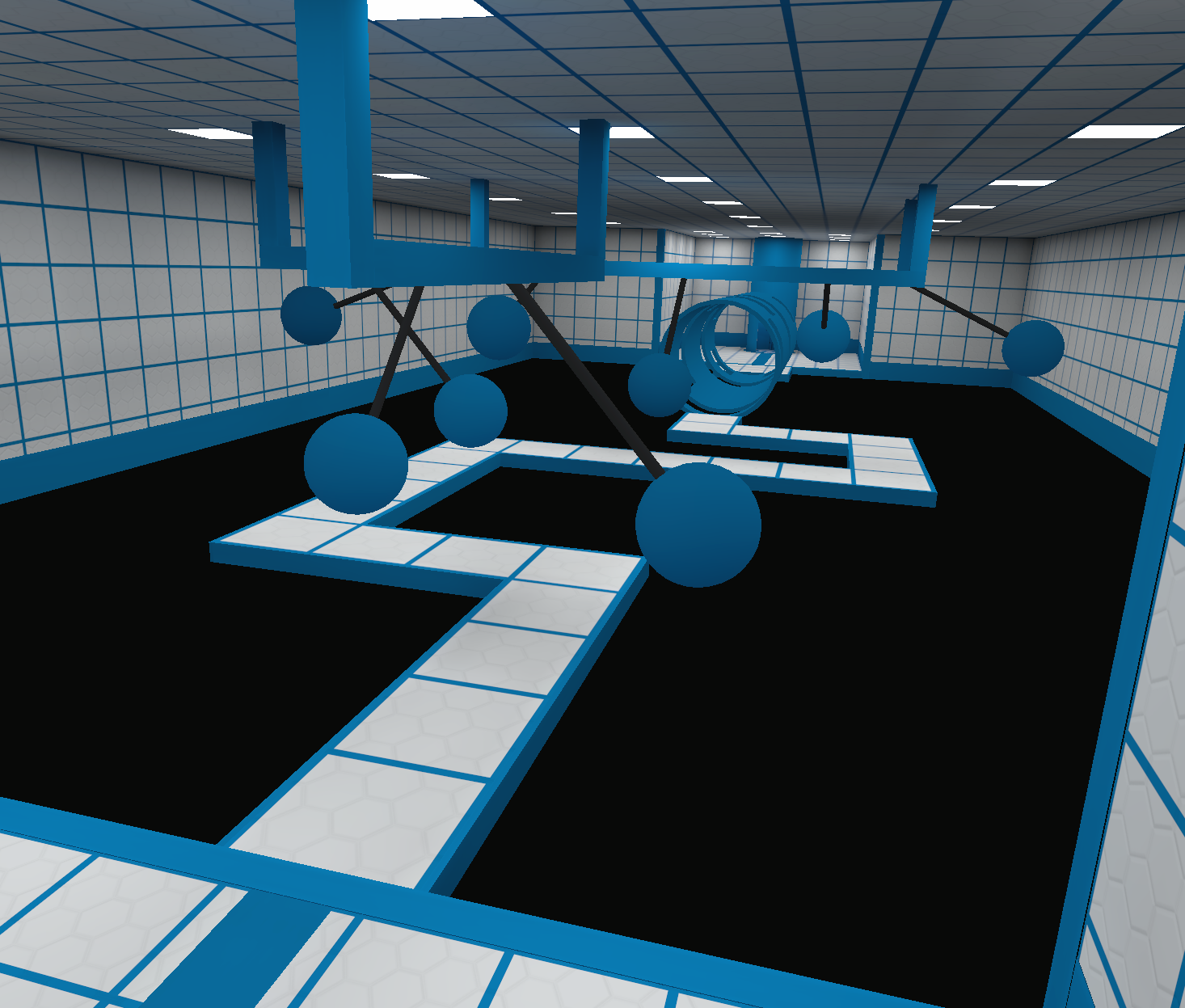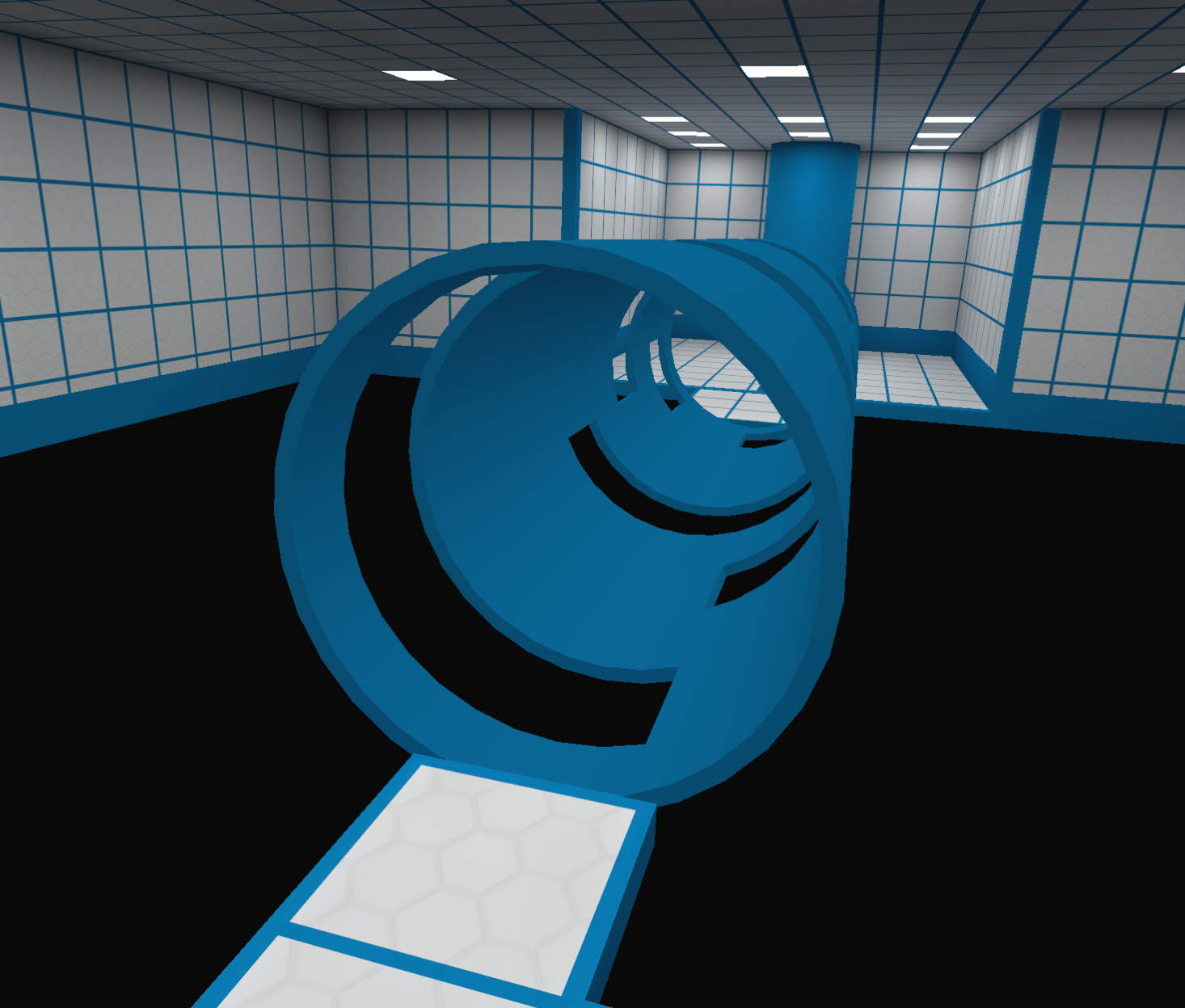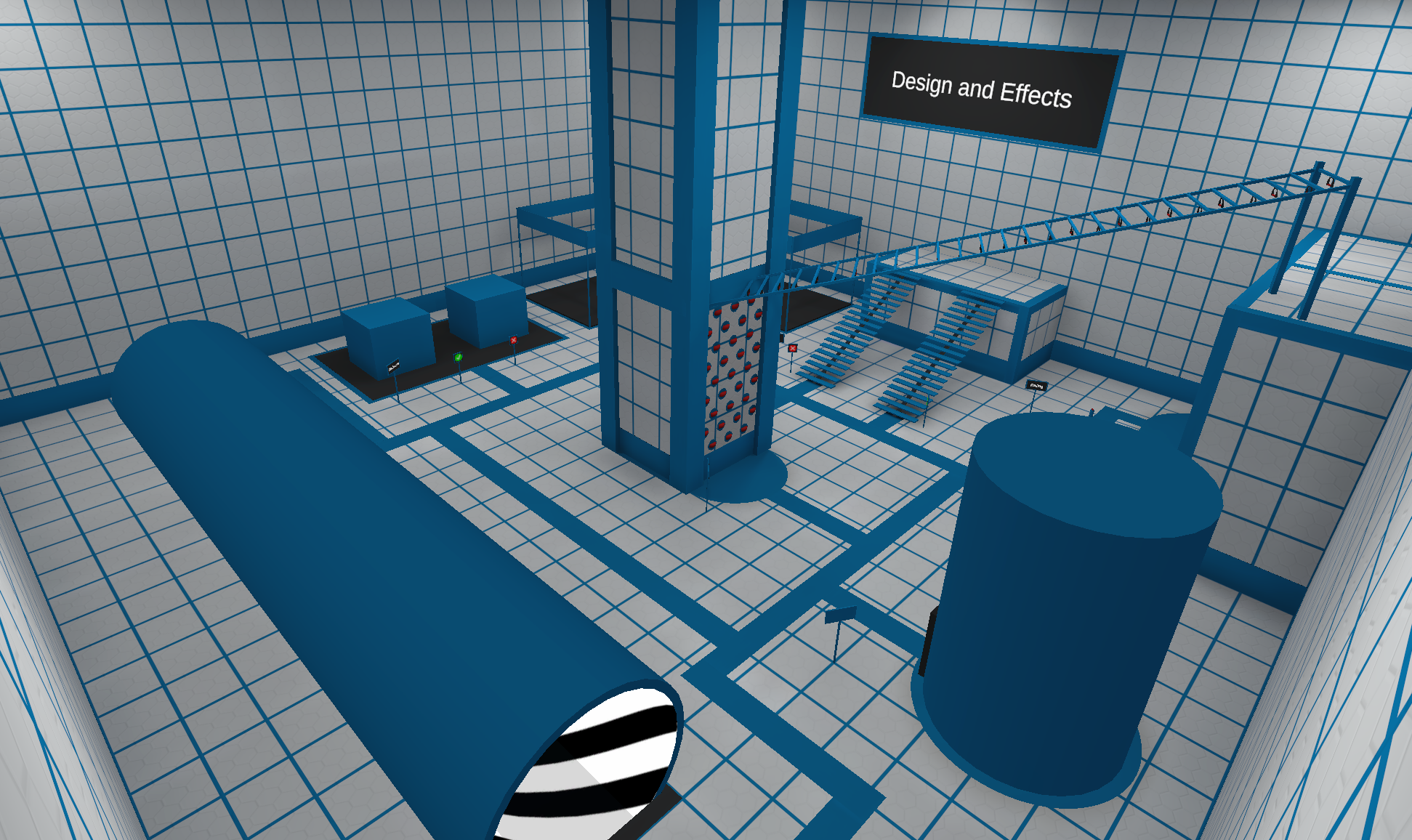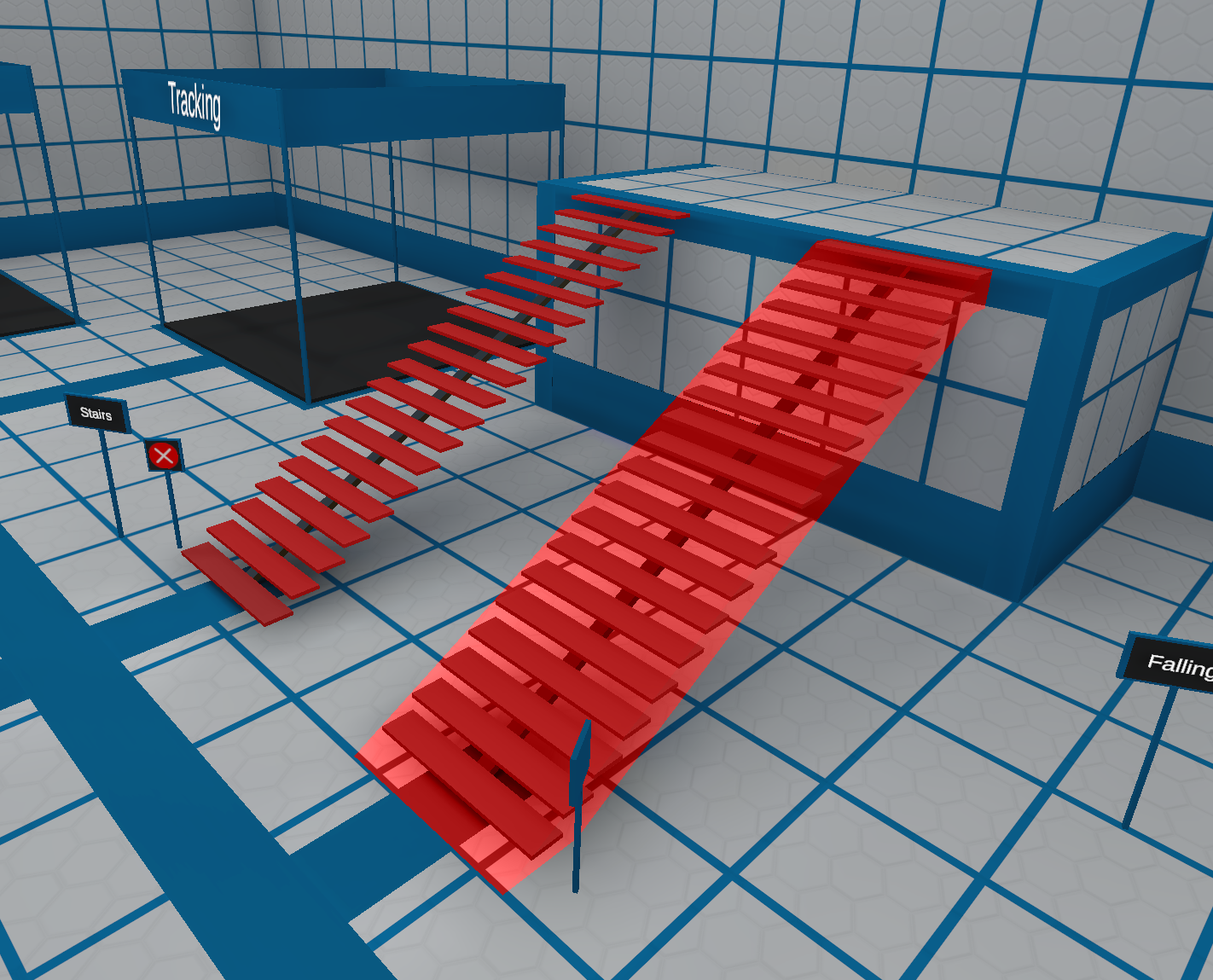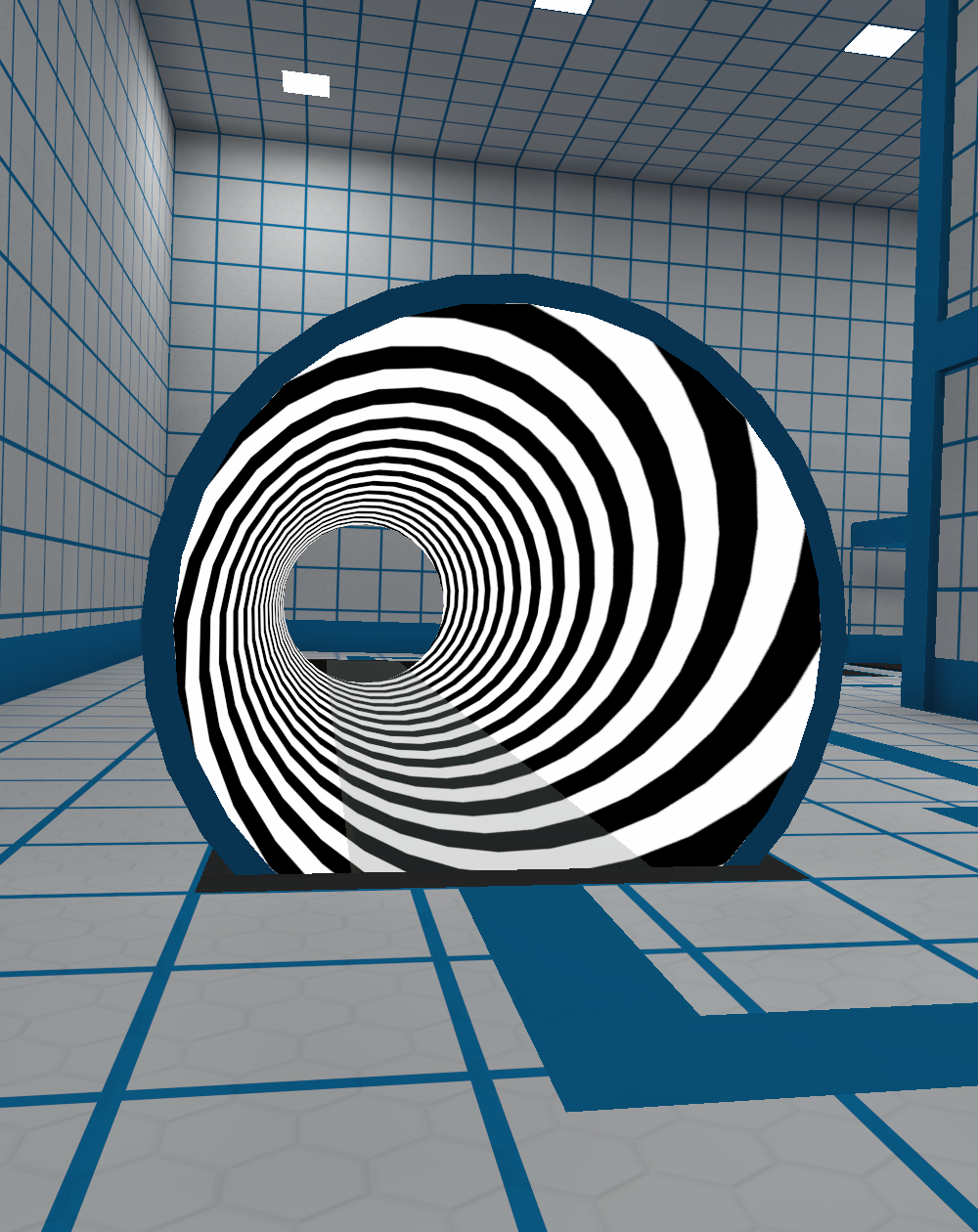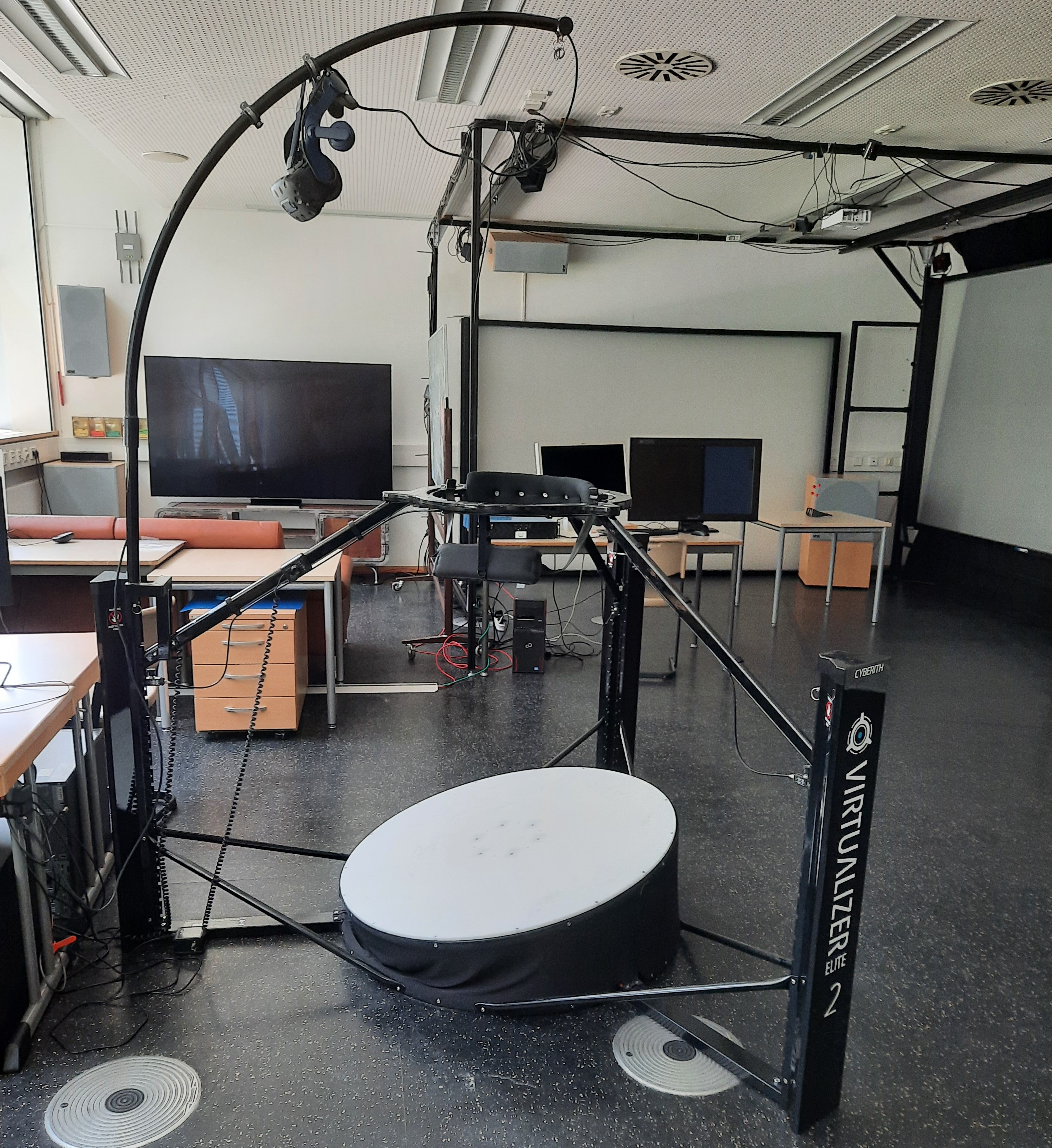Avoiding Motion Sickness in VR
This Unity game was developed in conjunction with my Master's Thesis at the University of Applied Sciences in Kempten, Germany.
The main goal of this thesis was to research different gameplay elements
and mechanics found in modern Virtual Reality games that can affect the occurrence of Motion Sickness.
While the focus was on the reduction and potential avoidance of the malady,
several game elements are designed to trigger motion sickness in
a targeted manner to offer a comprehensive test environment for research and user studies.
The game features several levels that are each built around a specific purpose and intend to test different aspects of modern VR games.
Some of these levels are designed around the player's locomotion in the virtual world, presenting the user with multiple obstacle courses,
while others have a heavier focus on passive locomotion that the user has no direct control over (e.g., riding a rollercoaster or driving a vehicle).
A big focus for both the game and the accompanying thesis was the usage of varying input methods to facilitate a more natural way of traversing the virtual world.
The most interesting input device used was the Virtualizer VR-Treadmill
from Cyberith,
which also played a major role in a user study that was conducted for the thesis.
Additionally, the game offers a plethora of options, ranging from common VR-locomotion methods (e.g., rotation-snapping and teleportation)
to the artificial reduction of the user's field-of-view using a variety of shader-based methods.
| Type: |
Research Project Virtual Reality |
| Role: | Main Developer |
| Engine: | Unity |
| Language: | C# |
| Used Tools: |
Visual Studio SteamVR Blender Excel |
| Initial Release: | 2022 |
